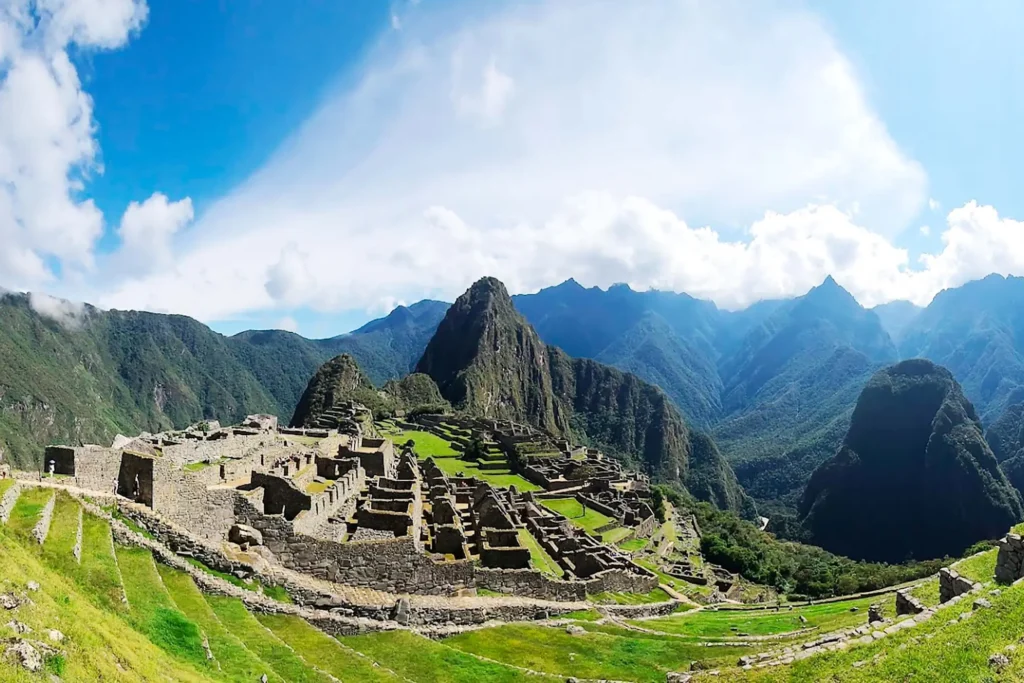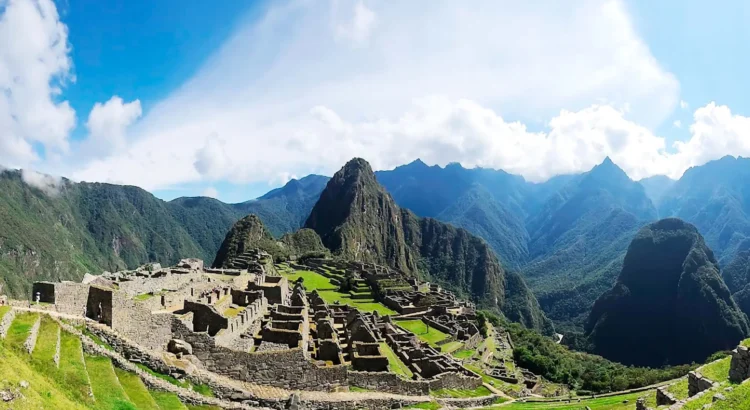
Perched high among the mist-shrouded peaks of the Andes, Machu Picchu emerges from the clouds like a vision out of time—a perfectly preserved relic of the once-mighty Inca Empire. This 15th-century citadel, set dramatically between two lush mountain peaks and overlooking the Urubamba River Valley, is one of the most iconic archaeological sites in the world. Whether approached by foot via the legendary Inca Trail or reached by train and bus, Machu Picchu offers more than just history—it delivers a spiritual, physical, and emotional journey that leaves visitors changed.
A Lost City Rediscovered
Long hidden from the outside world, Machu Picchu was never discovered by the Spanish conquistadors, which helped preserve it from plunder and destruction. It remained largely unknown until 1911, when American historian and explorer Hiram Bingham brought the site to global attention. Since then, Machu Picchu has become a symbol of the Inca civilization’s ingenuity, architectural mastery, and deep relationship with the natural world.
Constructed around 1450 during the reign of Pachacuti Inca Yupanqui, Machu Picchu is believed to have served as a royal estate, a religious retreat, or perhaps both. Today, it is a UNESCO World Heritage Site and one of the New Seven Wonders of the World—a destination of pilgrimage not only for history buffs but for adventurers, seekers, and lovers of natural beauty.
The Inca Trail: A Journey Through Time
For those who seek a deeper experience, the Inca Trail is the most unforgettable path to Machu Picchu. This four-day trek covers approximately 42 kilometers (26 miles) through rugged terrain, dense cloud forests, and ancient Incan ruins. The journey is challenging yet deeply rewarding, combining physical endurance with cultural immersion and natural splendor.
Day 1: The Beginning
Starting from the town of Ollantaytambo, trekkers cross the Urubamba River and follow an ascending trail lined with wild orchids, hummingbirds, and the occasional glimpse of snow-capped Andean peaks. Camps are set near small villages, offering a chance to interact with local Quechua-speaking communities.
Day 2: The Challenge of Dead Woman’s Pass
The most difficult part of the trail is the ascent to Warmiwañusca, or Dead Woman’s Pass, reaching an altitude of 4,215 meters (13,828 feet). The climb is physically demanding, but the sense of accomplishment at the summit, combined with panoramic views, is unforgettable.
Day 3: Runkurakay and Sayacmarca
The third day is arguably the most beautiful, with visits to archaeological sites like Runkurakay, Phuyupatamarca, and Sayacmarca. Trekkers descend into misty cloud forests where moss-covered trees and whispering winds create an atmosphere of otherworldly mystery.
Day 4: The Sun Gate and First Glimpse
Before dawn, trekkers rise early to reach Inti Punku, the Sun Gate, and witness their first view of Machu Picchu bathed in morning light. The sight of the citadel emerging from the mist is one of the most emotional moments of the entire journey—one that lingers in memory for a lifetime.
Architecture and Alignment: Engineering in Harmony With Nature
One of the most astonishing features of Machu Picchu is how it blends seamlessly into the mountain landscape. The Incas were master stoneworkers, using a technique called ashlar masonry, where stones are cut with such precision that they fit together without mortar.
The city is divided into two main sectors: agricultural and urban.
- The agricultural sector includes the famous terraces, which prevented erosion and allowed farming on steep slopes.
- The urban sector houses temples, royal residences, and ceremonial plazas, including the Temple of the Sun, the Intihuatana Stone, and the Room of the Three Windows.
The layout of Machu Picchu reflects deep astronomical and cosmological significance. The Intihuatana, a ritual stone aligned with the sun’s movements, was likely used for astronomical observations, agricultural calendars, and spiritual ceremonies.
Biodiversity and the Cloud Forest Ecosystem
Machu Picchu is located in a tropical mountain forest, often cloaked in cloud and rich with biodiversity. This unique microclimate supports a wide variety of flora and fauna:
- Orchids: Over 300 species flourish in the area.
- Birds: Including the majestic Andean condor, cock-of-the-rock, and hummingbirds.
- Mammals: Such as spectacled bears, pumas, and rare jungle deer.
This living environment adds a magical layer to the ruins. Mist drifts through ancient doorways, rainwater collects on centuries-old stones, and butterflies flutter across sacred staircases. The line between the natural and the constructed world seems to blur—emphasizing the Inca’s harmony with nature.
Alternative Routes and Access
While the Inca Trail is the most famous way to reach Machu Picchu, it’s not the only route:
- Salkantay Trek: A longer, higher-altitude route for seasoned hikers who want a less crowded experience.
- Lares Trek: A cultural route through remote villages and weaving communities.
- Train from Cusco or Ollantaytambo: A comfortable and scenic option for those with limited time or mobility.
- Bus from Aguas Calientes: The final leg for most travelers, ascending to the entrance gate of Machu Picchu.
Each path offers its own unique experience and perspective on the landscape and culture of the Sacred Valley.
Spiritual Significance and Cultural Connection
Machu Picchu is not just a historical monument—it’s a sacred site. Many visitors describe a profound emotional or spiritual reaction upon arrival. Whether it’s the scale, the silence, or the sheer improbability of its existence atop a mountain, something about Machu Picchu moves people.
The Incas believed that mountains, or “apus”, were sacred deities. Machu Picchu is surrounded by towering peaks like Huayna Picchu and Putucusi, which were likely considered protectors of the citadel. Ceremonies, offerings, and alignments with solstices all reflect a worldview in which nature and spirit are deeply intertwined.
Practical Tips for Visitors
- Altitude Awareness: Spend a couple of days in Cusco (3,400m) or Sacred Valley before heading to Machu Picchu to acclimate.
- Permits: Book Inca Trail permits months in advance—only 500 people are allowed per day.
- Best Time to Visit: The dry season (May to October) offers clearer skies, while the rainy season (November to March) has fewer tourists but muddier trails.
- What to Bring: Sunscreen, insect repellent, light rain gear, reusable water bottles, and good hiking shoes.
- Respect the Site: Do not climb on ruins, pick plants, or leave trash. Machu Picchu is a protected site, and its preservation is everyone’s responsibility.
Staying in Aguas Calientes
Most travelers spend a night in Aguas Calientes, the gateway town at the base of the mountain. While largely tourist-driven, it offers hot springs, riverside cafés, markets, and a wide range of accommodations. The town’s name literally means “hot waters,” and a soak in the thermal baths is a perfect way to unwind after a trek.
Postcard Moments: Don’t Miss These Highlights
- Climbing Huayna Picchu: This steep mountain provides a bird’s-eye view of the ruins and an adrenaline-pumping ascent.
- The Sun Gate (Inti Punku): The classic final stop for Inca Trail hikers with panoramic views of the entire citadel.
- The Temple of the Condor: Ingeniously shaped stones form a tribute to the sacred bird of the Andes.
- The Guardhouse: Offers the postcard-perfect view of Machu Picchu with the classic layout of terraces and temples.
Conclusion: A Journey Beyond Time
Machu Picchu is not just a destination; it is an experience that transcends geography and time. It’s a place where nature, culture, and spirituality converge in dramatic harmony. The citadel stands as a testament to human creativity, resilience, and reverence for the natural world.
Whether you come for the trek, the views, the history, or the adventure, Machu Picchu offers something more—an invitation to pause, reflect, and connect with something far greater than ourselves. In the mists that swirl around its granite walls, many travelers find not just a forgotten city—but a piece of their own soul.




